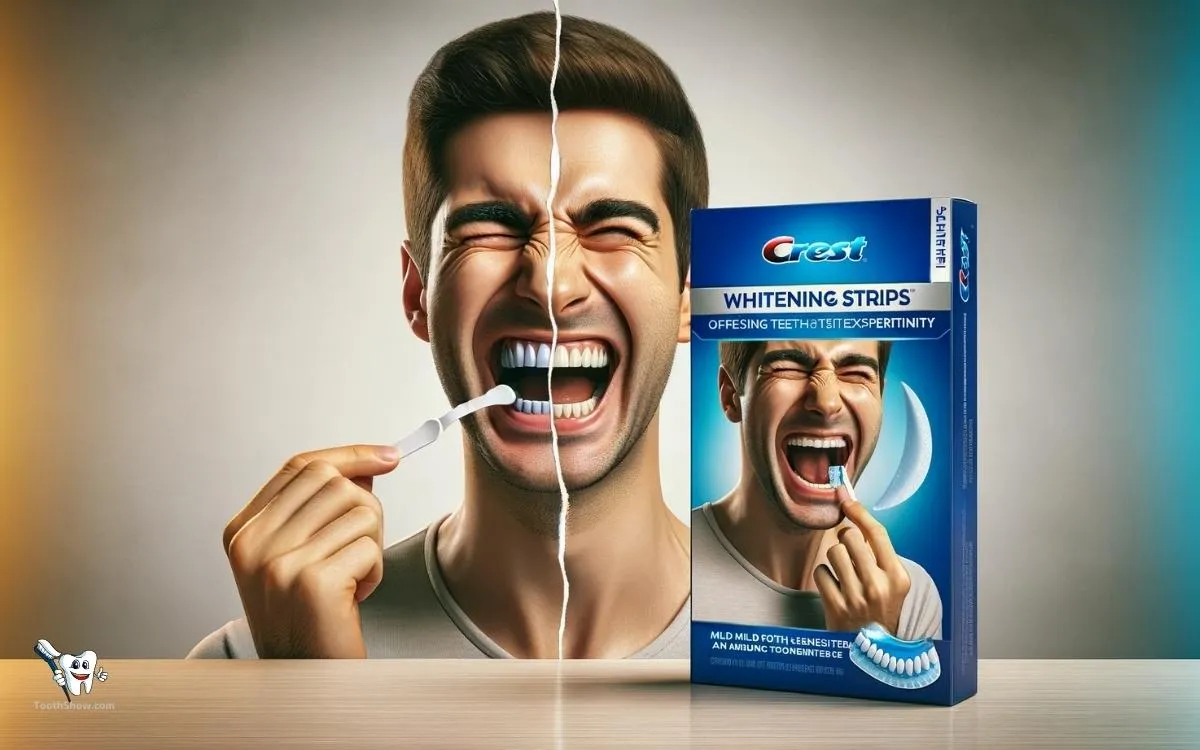Why Do Whitening Strips Cause Tooth Pain?
Many people turn to whitening strips for a brighter smile, but sometimes, this pursuit of pearly whites can lead to an unpleasant side effect tooth pain. Understanding why whitening strips might cause discomfort is the first step toward preventing it and ensuring a more comfortable whitening experience. The pain experienced can range from mild sensitivity to more intense throbbing, making it crucial to pinpoint the underlying causes. This guide explores the top five reasons why your teeth might hurt after using whitening strips, helping you to identify the issue and take appropriate action.
Enamel Sensitivity
One of the most common culprits behind tooth pain caused by whitening strips is enamel sensitivity. The active ingredients in these strips, typically hydrogen peroxide or carbamide peroxide, work by penetrating the enamel to break down stain molecules. This process, however, can also make the enamel more porous, exposing the underlying dentin, which contains nerve endings. This exposure can trigger pain when exposed to hot, cold, sweet, or acidic foods and drinks.
How Whitening Strips Affect Enamel

The chemicals in whitening strips can temporarily weaken the enamel, making it more susceptible to sensitivity. The higher the concentration of the active ingredient and the longer the strip is in contact with the teeth, the greater the potential for enamel irritation. Even with lower concentrations, repeated use can lead to cumulative effects, increasing sensitivity over time. This is why it’s essential to follow the product instructions carefully and avoid overuse.
Tips to Reduce Enamel Sensitivity
To minimize enamel sensitivity, consider several strategies. First, use a toothpaste designed for sensitive teeth. These toothpastes contain ingredients that help to block the tubules in the dentin, reducing the flow of stimuli to the nerves. Avoid consuming highly acidic foods and drinks, especially immediately after using whitening strips. Consider shortening the application time as directed on the product. Lastly, consult your dentist about professional whitening options if sensitivity becomes a significant issue.
Gum Irritation
Whitening strips are designed to adhere to teeth, but they can sometimes come into contact with the gums, causing irritation. The same bleaching agents that whiten teeth can also irritate the soft tissues of the gums, leading to inflammation, redness, and pain. This is particularly common if the strips are too large, not applied correctly, or if the person has pre-existing gum issues.
How Whitening Strips Irritate Gums

The peroxide in the strips can chemically burn the gum tissue if it comes into direct contact. This can cause the gums to become inflamed and tender. Moreover, if the strips are not properly positioned, they might overlap the gums, exposing them to the whitening agent for extended periods. Sensitive individuals are more likely to experience gum irritation, making careful application and product selection crucial.
Preventing Gum Irritation
Preventing gum irritation involves careful application techniques and product choices. Always ensure the strips are placed correctly, adhering only to the teeth and avoiding contact with the gums. You can also trim the strips if necessary to ensure a better fit. Rinse your mouth thoroughly after each use to remove any residual whitening agent. If gum irritation persists, consider using a lower-concentration product or consult your dentist for advice.
Existing Dental Issues
Sometimes, tooth pain from whitening strips isn’t caused by the strips themselves but by pre-existing dental issues. Problems like cavities, hairline cracks in the teeth, or receding gums can make your teeth more sensitive and vulnerable to the effects of whitening agents. Using whitening strips might exacerbate these issues, leading to significant discomfort.
Identifying Dental Problems

If you experience sharp or persistent pain, it’s essential to check for underlying dental problems. Look for signs of cavities, such as dark spots or holes in your teeth. Examine your gums for signs of recession, which can expose the sensitive root surfaces of your teeth. Note any sensitivity to temperature or pressure, as this could indicate a crack or other damage to the tooth. If you suspect a dental issue, schedule an appointment with your dentist immediately.
Consulting Your Dentist
Your dentist is the best resource for identifying and addressing any dental problems that might be causing your pain. They can perform a thorough examination, including X-rays, to detect any hidden issues. They can also recommend appropriate treatments, such as fillings or root canal therapy, to resolve the problem before you continue using whitening strips. Regular dental check-ups are critical for maintaining good oral health and preventing pain.
Improper Usage
How you use whitening strips can significantly impact the level of comfort you experience. Following the instructions is crucial, but common mistakes can lead to unnecessary pain and sensitivity. Applying the strips incorrectly, using them too frequently, or leaving them on for too long can all contribute to discomfort.
Applying Strips Incorrectly

Make sure that you follow the package directions. Ensure your teeth are clean and dry before applying the strips. Avoid touching your gums with the whitening agent. Ensure that strips are applied to your teeth only and are properly aligned. Incorrect application can lead to uneven whitening and increased sensitivity. Avoid touching your gums and make sure the strips are properly aligned.
Overuse of Whitening Strips
Overusing whitening strips is a common mistake that can lead to increased pain and sensitivity. Following the recommended frequency of use is important. Using whitening strips more often than directed or for extended periods can damage your enamel and irritate your gums. If you experience pain, immediately stop using the product and consult with your dentist.
Allergic Reactions
In rare cases, the pain from whitening strips could be due to an allergic reaction. While not as common as other causes, allergic reactions can still occur and lead to discomfort. Identifying the specific ingredients that cause your sensitivity is vital to avoid future problems.
Ingredients to Watch Out For

The primary ingredient in whitening strips, hydrogen peroxide, is the most likely culprit. Other additives, like flavoring agents or stabilizers, can also trigger allergic reactions. If you have a history of allergies, carefully review the ingredient list before using a new product. Look for products labeled as ‘hypoallergenic’ or ‘sensitive teeth’ formulas, as they are often formulated with fewer potential irritants.
Managing Allergic Reactions
If you suspect an allergic reaction, discontinue use immediately. Rinse your mouth thoroughly with water. If symptoms persist, such as swelling, itching, or difficulty breathing, seek medical attention right away. To prevent future allergic reactions, discuss your sensitivities with your dentist and consider alternative whitening options that do not contain the triggering ingredients.
Conclusion
Experiencing pain after using whitening strips is an unfortunate experience, but understanding the potential causes can help you prevent it and find relief. By recognizing the top five reasons, from enamel sensitivity and gum irritation to existing dental issues, improper usage, and allergic reactions, you can take proactive steps to ensure a more comfortable whitening journey. Always prioritize your oral health and consult your dentist if you experience persistent or severe pain. With the right approach, you can achieve a brighter smile without the discomfort.
